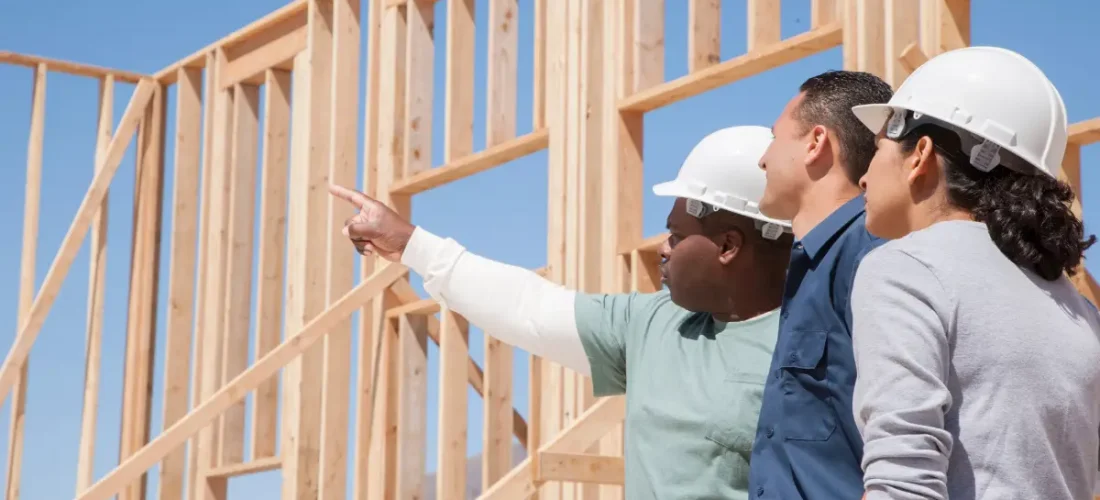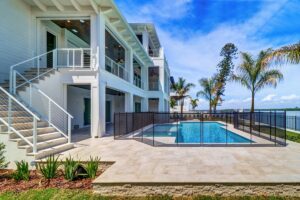Living on Florida’s stunning waterfront comes with countless joys—beautiful views, peaceful breezes, and a sense of connection to nature. But when hurricanes or heavy storms leave your home damaged, it’s natural to feel overwhelmed by the decisions ahead. Whether you’re facing repairs or considering a fresh start, this moment can also be an opportunity to reimagine your dream home.
We understand how challenging it can be to navigate these choices, especially when dealing with FEMA guidelines. That’s why we’ve created this guide—to help you make a confident, informed decision and explore the best path forward for your home and family.
Understanding FEMA’s 50% Rule
A critical factor influencing your decision is FEMA’s 50% rule. FEMA states:
“If the cost of improvements or repairs exceeds 50% of the market value of the building, the structure must comply with current floodplain management standards.”
This means that if your planned renovations exceed half the market value of your home, your entire property must meet modern flood-resilient building codes. These codes may require elevating your home or incorporating other design elements to reduce flood risks, significantly increasing project costs.
For many homeowners, this tipping point signals that building a new home may be the more practical and financially sound option.
FEMA Guidelines for Flood Zones
Before making any decisions, check if your home is located in a FEMA-designated flood zone. Flood zone classifications influence the building requirements you’ll need to meet. You can look up your property’s flood zone through FEMA’s Flood Map Service Center.
How to Find Your FEMA Value
To determine whether the 50% rule applies to your home, follow these steps:
- Check Your Property’s Market Value
- Visit your local county property appraiser’s website to look up the most recent assessed value of your home.
- Note that FEMA typically uses the market value of the building only (not including land).
- Obtain a Professional Appraisal
- If you suspect your county’s assessed value is outdated or inaccurate, consider hiring a licensed property appraiser to provide an up-to-date market valuation.
- Compare Your Project Costs
- Obtain detailed estimates for your planned repairs or improvements.
- Divide these costs by your home’s market value to see if they exceed 50%.
- Consult Your Local Building Department
- Reach out to your local government to confirm how FEMA’s 50% rule applies in your area. Some municipalities have stricter requirements or additional considerations.
Options if Renovations Exceed the 50% Threshold
If your renovation costs exceed FEMA’s 50% threshold, you’ll face a critical decision: invest more to bring your existing home into compliance or consider starting fresh with a new build. Each option has unique implications, and understanding them can help you make the right choice for your situation.
Option 1: Remodeling Beyond the Threshold
Exceeding the 50% threshold means your entire home must meet current floodplain management standards. This often includes:
- Elevating the Structure: Raising your home above the base flood elevation, which can be logistically complex and costly.
- Structural Reinforcements: Updating foundations, walls, and roofing for hurricane-safe custom homes that meet hurricane-resistant building codes.
- Compliance Upgrades: Installing flood vents, using specific materials, and ensuring the property meets FEMA’s resiliency standards.
While possible, these upgrades can quickly become cost-prohibitive, especially for older homes not originally designed with modern codes in mind.
Option 2: Tear Down & Build New
If remodeling costs climb due to compliance requirements, tearing down to rebuild may be the right choice, often providing a better return on investment. Rebuilding allows you to:
- Maximize Modern Standards: Design a home fully compliant with FEMA regulations from the start, eliminating patchwork fixes.
- Customize Your Space: Create a layout and aesthetic tailored to your lifestyle, with the latest in luxury finishes and energy-efficient technologies.
- Future-Proof Your Home: Incorporate hurricane and flood-resistant designs to reduce risks and insurance premiums.
For many homeowners, the ability to start fresh while staying on the same property makes rebuilding the more practical, long-term solution.
At LaBram Homes, we help clients navigate this decision with a clear understanding of costs, compliance requirements, and personal goals. Whether you choose to renovate or build new, our team ensures your waterfront home is as beautiful as it is resilient.
Considerations for Renovation vs. Building New
Why renovate when you can build new? While remodeling may feel like a natural choice, significant repairs to older homes often reveal unforeseen structural or compliance issues that drive up costs. On the other hand, building a new custom home offers several benefits:
- Customization: Tailor every aspect of your new home to meet your lifestyle needs.
- Energy Efficiency: Incorporate modern, energy-efficient materials and designs.
- Resilience: Build to current hurricane and flood-resistant standards, ensuring peace of mind.
Why Choose LaBram Homes for Your New Build
LaBram Homes specializes in creating custom waterfront homes that combine luxury with resilience. Whether you’re ready to rebuild or still exploring your options, our team will guide you through every step, from site assessment to design and construction. We help homeowners navigate FEMA regulations, permitting, and flood compliance so you can focus on creating your dream home.
If you’re facing the decision to remodel or rebuild, contact LaBram Homes for a complimentary consultation. Together, we’ll evaluate your options, discuss your goals, and determine the best way forward to maximize your investment and protect your future.



